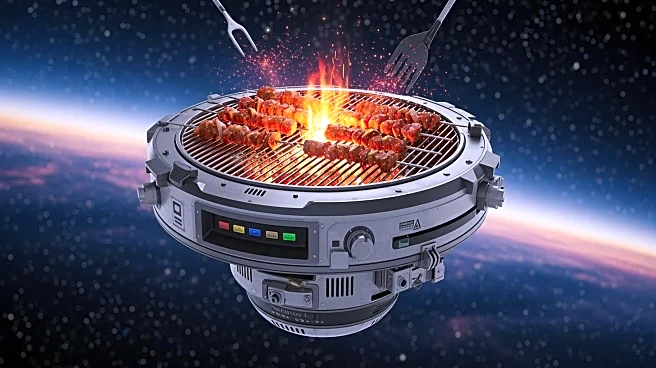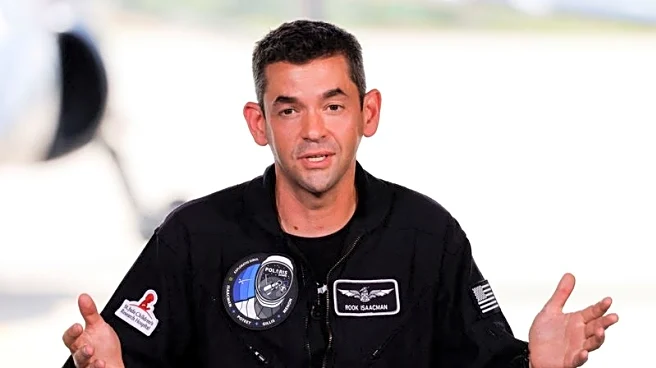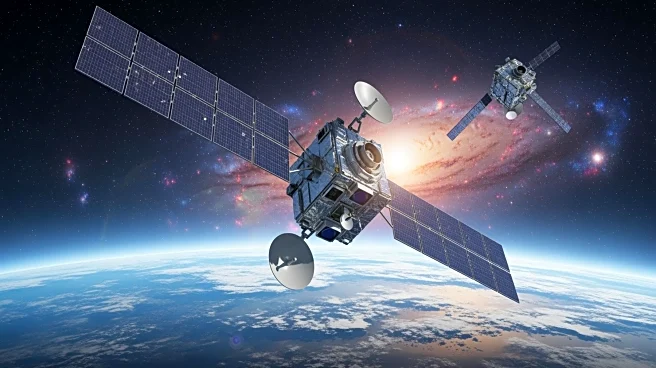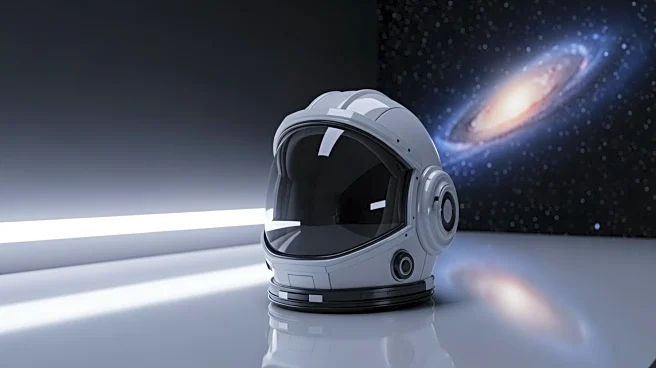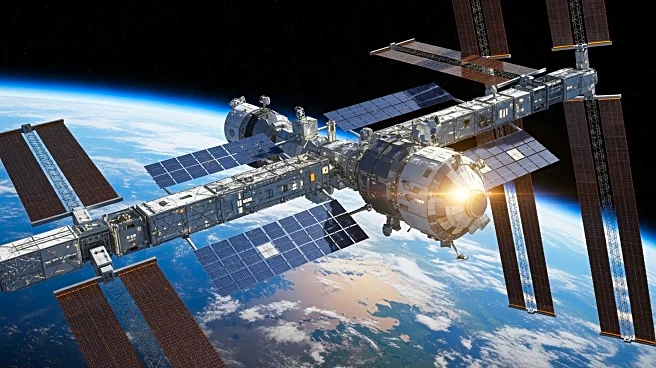What's Happening?
Chinese astronauts aboard the Tiangong space station have successfully grilled chicken wings and steaks using a newly installed oven designed for microgravity conditions. This development marks a significant
upgrade in orbital living conditions, showcasing China's advancing capabilities in sustaining long-term human presence in space. The oven, which allows for smoke-free baking and precise temperature control, represents a leap forward in space food technology, moving beyond pre-packaged meals to real-time cooking. The event, captured in viral videos, highlights the integration of everyday comforts into extraterrestrial environments, with crew members from the Shenzhou-20 and Shenzhou-21 missions participating in the feast.
Why It's Important?
This culinary innovation is not just about morale-boosting meals; it represents a strategic enhancement for long-haul space trips. Freshly prepared food can combat the psychological strains of isolation in space, improving the quality of life for astronauts during extended missions. The ability to cook in space reduces dependency on Earth-supplied provisions, a key factor for sustainable deep-space exploration. China's advancements in space technology position it as a formidable player alongside the U.S. and Russia, demonstrating maturity in sustaining crewed missions and potentially influencing future space habitats planned for the Moon or Mars.
What's Next?
Looking ahead, this culinary capability could extend to growing food in space, integrating with hydroponic systems. Such innovations will be crucial for China's lunar base plans by the 2030s. Additionally, China is opening Tiangong to international collaboration, with plans to host a Pakistani astronaut, signaling a shift toward global partnerships. The oven's technology has terrestrial applications, potentially in energy-efficient cooking appliances, driving broader engineering breakthroughs.
Beyond the Headlines
The oven's design addresses unique challenges of microgravity, where convection doesn't work as on Earth. It employs advanced heating elements and filtration systems to prevent particle dispersion, ensuring the station's air quality remains pristine. This technological innovation not only boosts national pride but also inspires global interest in space exploration, positioning China as a leader in human spaceflight sustainability.
